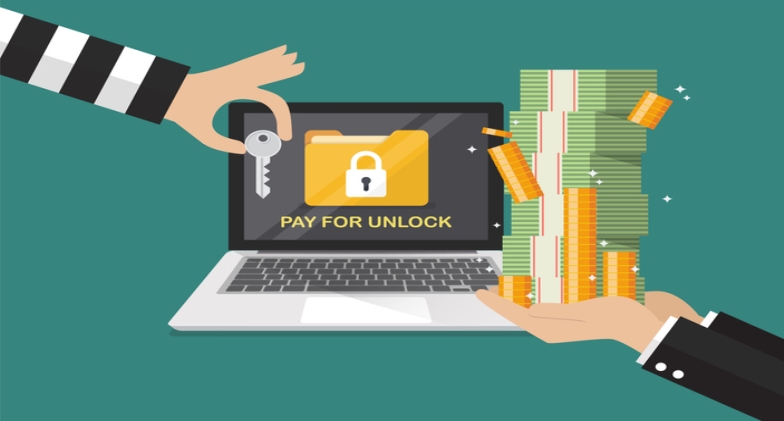In the digital age, our lives are increasingly intertwined with technology. From personal photos to business-critical documents, we entrust our data to the digital realm. However, this convenience comes with risks, and one of the most insidious threats we face is ransomware. This malicious software can encrypt your files and demand a ransom for their release, wreaking havoc on individuals and organizations alike. In this comprehensive guide, we’ll demystify the process of the remove ransomware and provide you with the knowledge and tools to reclaim your data safely.
Contents
Understanding the Menace of Ransomware
Ransomware is a type of malware designed to hold your files hostage by encrypting them. Perpetrators then demand a ransom, typically payable in cryptocurrencies like Bitcoin, in exchange for the decryption key. Ransomware attacks can be devastating, causing financial losses, data breaches, and significant downtime. To effectively remove ransomware, you must first understand its different forms and attack vectors:
-
Variants of Ransomware
Ransomware comes in various forms, including:
- Encrypting Ransomware: This type encrypts your files, rendering them inaccessible.
- Locker Ransomware: It locks you out of your system entirely.
- Master Boot Record (MBR) Ransomware: This targets the MBR, preventing your computer from starting.
-
Delivery Methods
Ransomware can infiltrate your system through:
- Email Attachments: Malicious attachments or links in phishing emails.
- Malvertising: Infected advertisements on websites.
- Drive-By Downloads: Malware downloads when you visit compromised websites.
- Social Engineering: Attackers tricking victims into downloading malware.
Immediate Steps to Take When Infected
Discovering ransomware on your system can be distressing, but taking immediate action is crucial:
- Isolate the Infected System: Disconnect the infected device from the network and other devices to prevent further spread.
- Identify the Ransomware: Determine which ransomware variant has attacked your system. Knowing the specific ransomware can help you find the appropriate decryption tool, if available.
- Do Not Pay the Ransom: Resist the temptation to pay the ransom. There’s no guarantee that you’ll get your files back, and you might encourage further criminal activity.
- Back Up Encrypted Data: Before attempting removal, back up your encrypted files to an external device or cloud storage. This ensures you have a copy even if the removal process goes awry.
Steps to Remove Ransomware
Removing ransomware requires a methodical approach. Here are the steps to follow:
-
Boot into Safe Mode
Safe Mode is a diagnostic mode in which Windows starts with a limited set of files and drivers. To boot into Safe Mode:
- Restart your computer.
- During the startup process, press the F8 key repeatedly until the Advanced Boot Options menu appears.
- Select “Safe Mode with Networking” to enable internet access.
-
Use Antivirus Software
Install reputable antivirus or anti-malware software if you don’t already have it. Update the software’s virus definitions and perform a full system scan. If the antivirus detects and removes the ransomware, you’re in luck. However, this doesn’t always work, as some ransomware can evade detection.
-
Employ Ransomware Removal Tools
Some security companies and cybersecurity experts develop ransomware removal tools. These tools are designed to target specific ransomware variants and attempt to decrypt your files without paying a ransom. If such a tool is available for the ransomware that infected your system, follow the instructions carefully.
-
Manual Removal (Advanced Users)
If you have technical expertise and know the ransomware variant you’re dealing with, you may consider manual removal. This involves identifying and deleting malicious files and registry entries associated with the ransomware. However, proceed with caution, as making a mistake can lead to system instability.
-
Restore from Backup
If you have secure and up-to-date backups, this is often the safest and most reliable way to recover your data. After removing the ransomware, restore your files from the backup you created earlier.
-
Seek Professional Help
If the above methods fail, or if you’re dealing with a particularly sophisticated ransomware strain, consider seeking professional help from a cybersecurity expert or an incident response team. They can provide guidance on removal and recovery. Additionally, Security+ certified cybersecurity professionals are highly sought after in the industry, often playing pivotal roles in incident response teams, ensuring swift and effective resolution in the face of advanced cyber threats, such as ransomware attacks.
Preventing Future Ransomware Attacks
While dealing with a ransomware infection is stressful, prevention is the best strategy. Here are essential steps to protect yourself and your data from future attacks:
- Regular Backups: Continuously back up your data to an external drive or a cloud-based service. Ensure backups are automated, frequent, and securely stored.
- Use Antivirus and Anti-Malware Software: Install reputable security software and keep it updated. Enable real-time scanning to catch threats before they can execute.
- Update Software: Keep your operating system, software applications, and plugins up to date. Cybercriminals often exploit vulnerabilities in outdated software.
- Employee Training: Educate yourself and your employees about phishing scams and social engineering tactics. Be cautious with email attachments and links.
- Network Security: Employ strong firewalls, intrusion detection systems, and regularly update your router’s firmware. Limit access to sensitive data.
- Patch Management: Implement a patch management strategy to quickly apply security updates and patches to your system.
- Use Strong Passwords: Encourage the use of complex, unique passwords and consider implementing two-factor authentication (2FA).
- Network Segmentation: Segment your network to limit the spread of ransomware in case of an infection.
In Conclusion
Ransomware is a formidable threat that can leave you feeling helpless, but with the right knowledge and tools, you can regain control of your data. Remember, the key is to act swiftly, seek professional help if needed, and take steps to prevent future attacks. By following these guidelines, you can demystify the process of removing ransomware and ensure the safety of your digital world.

